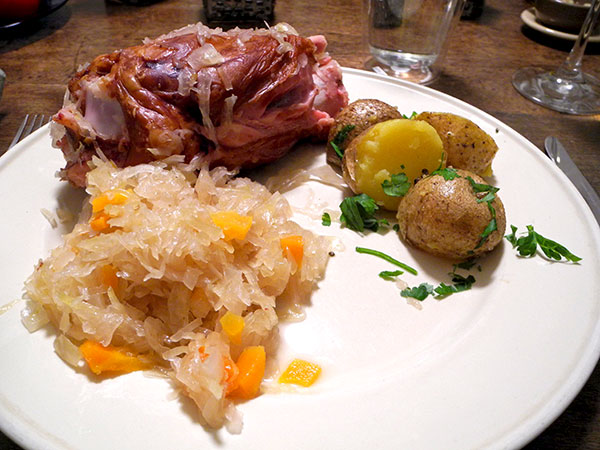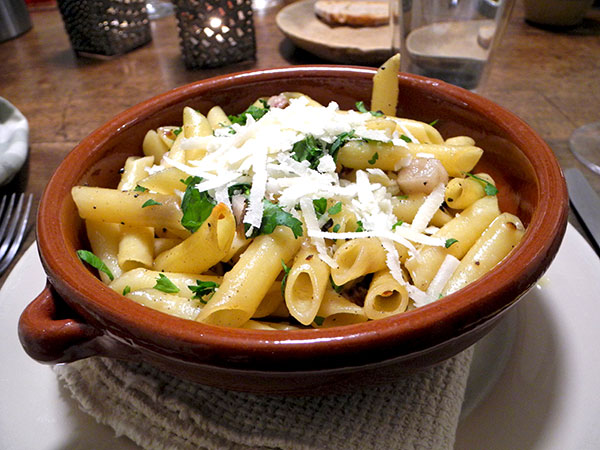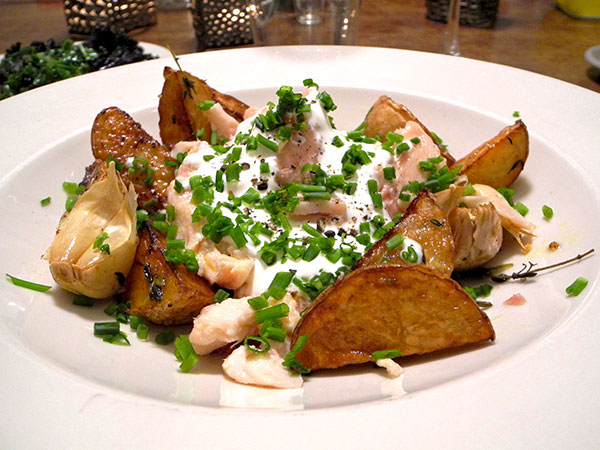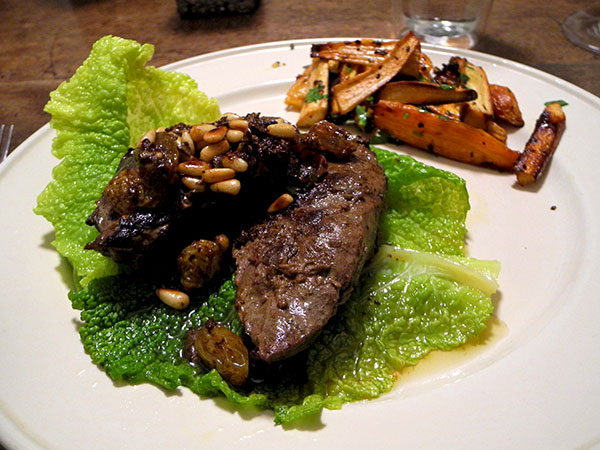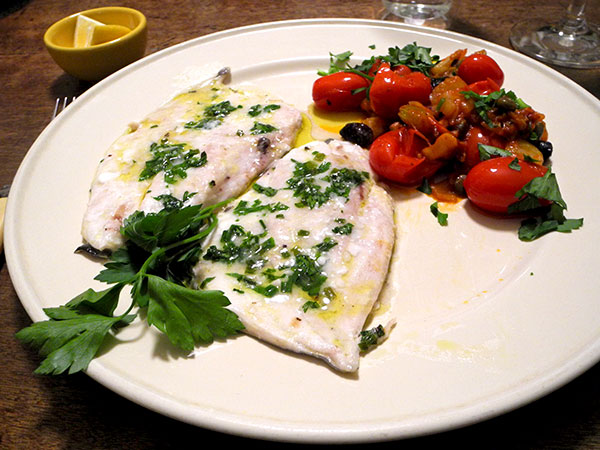We both really like skate, and I have no idea why it’s not more popular than it seems to be. Part of the problem may be the paucity of restaurant treatments known to most people who might otherwise be inclined to prepare this delicious fish at home, and part of it may be that not everyone has access to the really small, tender wings as do the patrons of our local Greenmarkets, which are supplied by fisherman off the eastern end of Long Island. Last night, for the two of us, I cooked five of them. They weighed approximately only 2 1/2 ounces each, and they all managed to fit into my 12-inch iron pan with very little space to spare.
The vegetable, collard greens, was a very late season cache from Rogowski Farm (probably the very last I’ll see there until fall). from which I was able to reserve enough for one more January meal.
It’s amazing to me, and hugely appreciated by myself and I hope many other market fans, that so many of what I will describe as ‘green vegetables’, perhaps generously in some cases, are still available here fresh at the end of January, and how coveted they are by our local home and restaurant chefs who scour the Union Square Greenmarket four days a week.
“Winter greens’? Not may years ago the produce in the stalls (far fewer in number) would have been pretty much limited to potatoes, onions, bread, preserves, maple syrup, cider, and apples. Today, in a symbiotic relationship with their city patrons, our local Greenmarket farmer neighbors, who had already become very creative in offering new produce, have managed to adopt and create new growing methods and environments, while continuing to provide the hands-on attention and care which allow these living things to thrive. Even in the month of January it is still possible (or has been, until almost this day) to find there kale, collards, leeks, Brussels sprouts, cabbage of several kinds, fennel, spinach, tomatoes of several kinds and colors, scallions, some delicate greens (including sorrel and cress), radicchio, sage, rosemary, thyme, and an occasional aberration like the baby leeks and fresh garlic I found on Friday, also at Rogowski Farm.
While I’m crazy about root vegetables, and every year I look forward to the winter sweetness they offer, they can really shine in the company of a fresh foil, even if it’s a tiny one.
- skate from Pura Vida Fisheries, dredged in a coarse polenta from Citarella, seasoned with salt, and pepper, very briefly fried in a bit of olive oil until golden brown, removed from the pan, the heat turned down, knobs of butter, some chopped shallots from John C. Madura Farms and finely-minced garlic from Migliorelli Farm added, the aliums stirred and cooked (‘sweated’) briefly, the flame then turned off entirely, and lemon juice, shredded sorrel from Rogowski Farm and a bit of chopped parsley from Eataly added to the pan along with a little more butter, all of it stirred once again until the butter melts, the sauce then scattered over the fish
- sweet collard greens from Rogowski Farm, cut in a rough chiffonade, then braised in a heavy pot in which crushed garlic from Migliorelli Farm had been allowed to sweat with some heated olive oil, the dish finished with salt, pepper, a sprinkle of fresh lemon, and a drizzle of olive oil
- the wine was a Spanish white, the wine was a Spanish white, Shaya old vines, verdejo Rueda 2013

